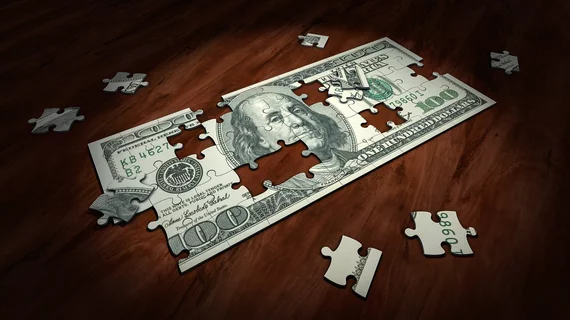How cardiologists can steer patient discussions about costs and value in the right direction
Cardiologists and other physician can help their patients by using simple “nudges” during discussions about out-of-pocket medication costs. These nudges can save patients money—and they can also ensure patients do not inadvertently miss out on effective medications.
That’s all according to a new analysis published in Circulation: Cardiovascular Quality and Outcomes.[1]
“Recently, high out-of-pocket costs have become particularly salient in the treatment of heart failure,” wrote first author Birju R. Rao, MD, MSc, a cardiology fellow with the Emory University School of Medicine, and colleagues. “Concerns about out-of-pocket cost can influence patients’ behavior and have been implicated in avoidance of medical care, nonadherence to medications, and the acceleration of healthcare disparities. On the contrary, patients who receive expensive treatments can face financial toxicity through negative impacts on quality of life or access to other forms of care. These effects may be particularly pronounced in patients with low income.”
The group noted that some efforts have been made to combat this growing problem, but these high costs are expected to remain in place “for the foreseeable future.”
How can physicians help? Consider the power of a simple ‘nudge’
Rao et al. examined the different ways that patients tend to let the costs of medications guide their decisions. Some patients, for instance, assume that a generic version of a medication is always just as good as the more expensive option—even though there are specific instances where this is just not the case.
Some patients also assume that more expensive medications are always more effective and provide more value. Again, there are instances where this is not true.
At the end of the day, patients are making assumptions based on their own personal experience or anecdotes they may hear from friends or family members. These “cognitive biases” could potentially lead to patients making decisions that have a negative impact on their health—or make them spend much more money than is really necessary.
Cardiologists and other physicians can make a big difference in the lives of their patients by using simple “nudges” to help them work through such assumptions.
“Insights from behavioral economics reveal that nudges involving manipulations in framing and choice architecture can be harnessed to impact decisions,” the authors wrote.
One example of a helpful nudge would be to make sacubitril/valsartan—which is much more expensive than an angiotensin converting enzyme-inhibitor, but also much more effective—the default drug choice for heart failure patients who need a prescription. The patient in this scenario would still be given multiple options, and the differences between each one would be highlighted, but the discussion would be shaped in a way that made it clear sacubitril/valsartan is “recommended as the first choice for heart failure.”
Nudges in the opposite direction can also be quite helpful. If a medication is associated with high out-of-pocket costs, but outcomes comparable to much cheaper alternatives, a physician may want to point out to the patient that higher costs do not always equal more value.
One key advantage of these nudges is that they allow physicians to get a point across without the patient feeling coerced or pressured. The patient is still ultimately free to do what they feel is the best option—even if what they want to do is pay more than is necessary to treat a specific condition. But the physician is contributing in an important way, providing context at a moment where the patient may feel overwhelmed or even scared.
“The nudges we suggest as examples in the context of cost discussion are designed to provide a counterweight against common biases or misapplied heuristics that interfere with effective shared decision-making,” the authors wrote. “Importantly, these are just examples. We are not advocating any particular form of nudge but rather the concept that using multiple, contextualized nudges to optimize specific components of shared decision-making may be helpful to improve complex decisions such as those involving out-of-pocket cost.”
The group also noted that more research is still needed to explore the impact of nudging patients in this way to ensure they don’t go too far and result in an “overcorrection of cognitive errors.”

